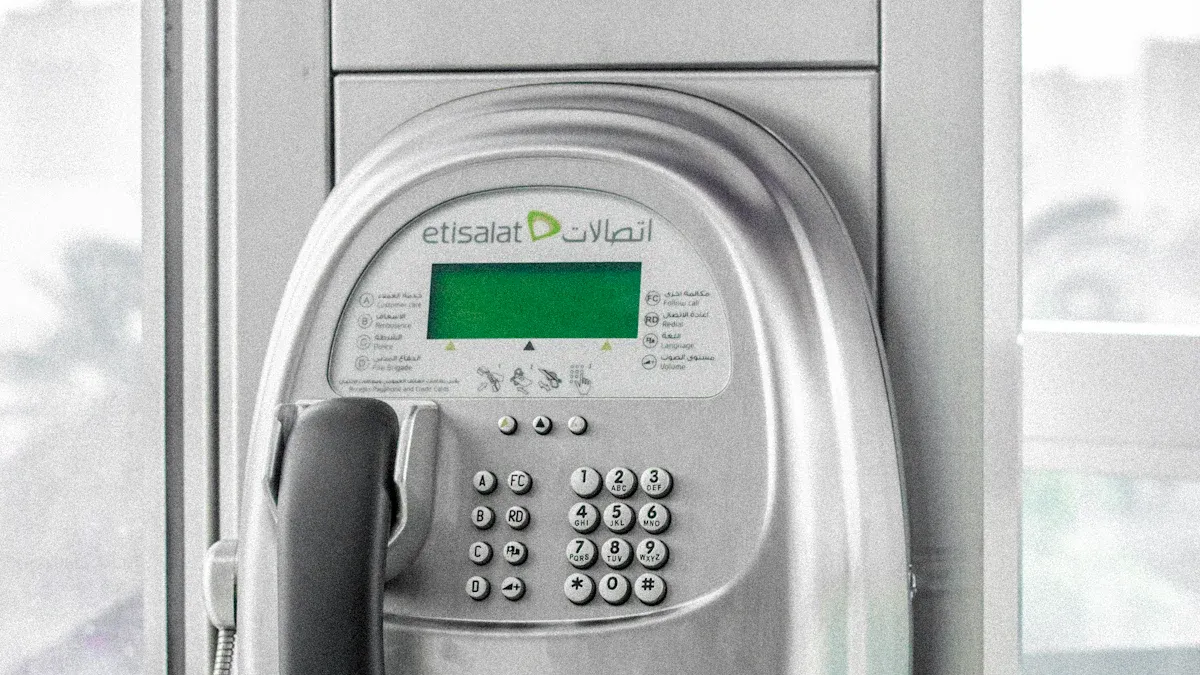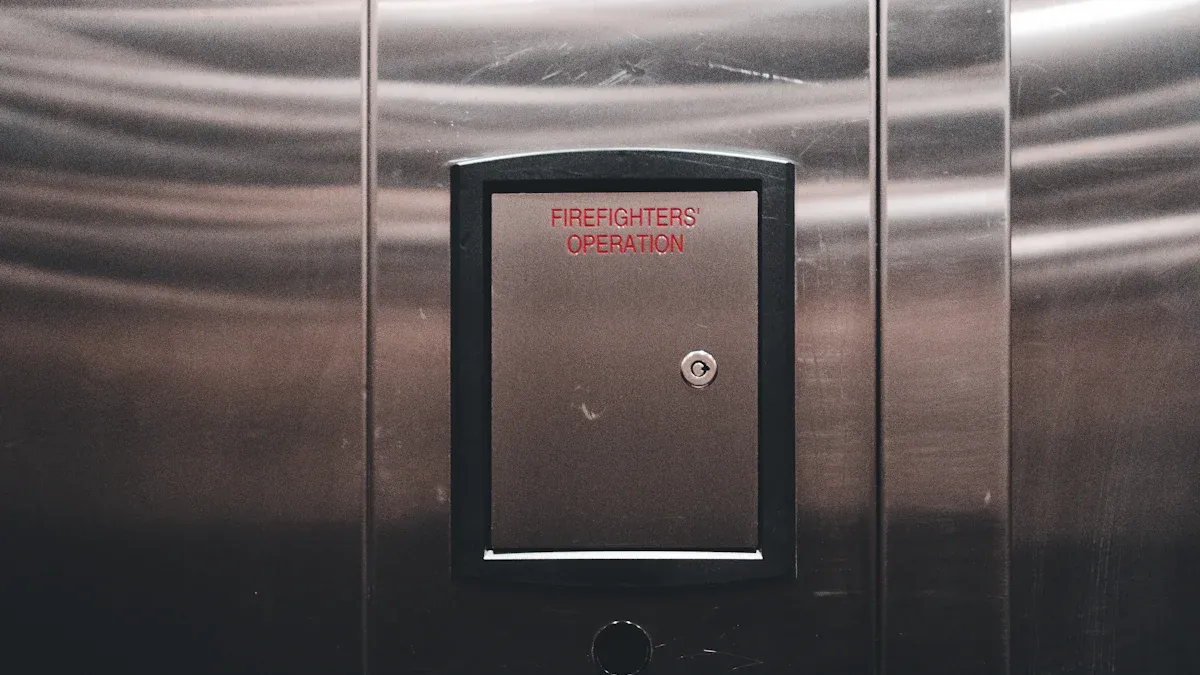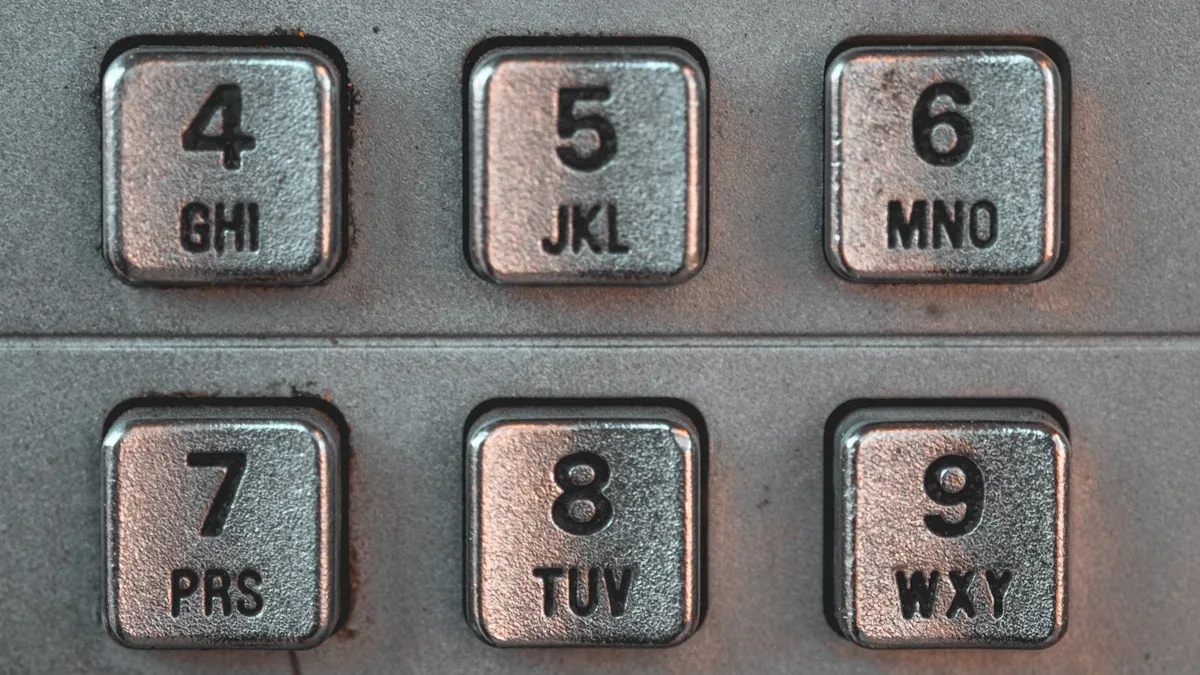
Choosing the right stainless steel illuminated keypad isn’t just about looks—it’s about finding the perfect balance of functionality and durability. You need something tough enough to handle daily use and bright enough to stay visible in any lighting. Think about where you’ll use it and what features make sense for your setup.
Key Takeaways
- Think about how and where you’ll use the keypad. Check how often it will be used and if it faces weather.
- Pick strong stainless steel for long-lasting use. Make sure it can handle bad weather and resist tampering.
- Look at the lighting features closely. Pick keypads with brightness you can adjust and even lighting for easy use anytime.
Define Your Requirements
Purpose and Application
Before choosing a stainless steel illuminated keypad, think about how you’ll use it. Is it for a secure entry system, an industrial machine, or maybe a public kiosk? Each purpose comes with its own set of needs. For example, a keypad for outdoor access control might need weatherproofing, while one for a factory floor should handle heavy use. Knowing the application helps you focus on the features that matter most.
Ask yourself: How often will it be used? Will it face rough handling? These questions guide you toward a keypad that fits your specific situation.
Environmental Considerations
Where will the keypad be installed? The environment plays a big role in your decision. If it’s outdoors, you’ll need a model that resists rain, dust, and extreme temperatures. For indoor use, you might prioritize aesthetics or ease of cleaning.
Public spaces often demand tamper-resistant designs, while private settings may not. Always match the keypad’s durability to the challenges of its surroundings.
Tip: Look for IP ratings to ensure the keypad can handle environmental stress. Higher ratings mean better protection against water and dust.
Key Features and Layout
The layout of the keypad should feel intuitive. Do you need a standard numeric pad, or would a custom layout work better? Think about the size of the buttons and the spacing between them. Larger buttons are easier to press, especially in low-light conditions.
Also, consider additional features like backlighting, tactile feedback, or programmable keys. These can enhance usability and make the keypad more versatile.
A well-designed stainless steel illuminated keypad doesn’t just look good—it works seamlessly with your needs.
Focus on Durability

Durability is one of the most important factors when choosing a stainless steel illuminated keypad. You want something that can handle wear and tear without losing its functionality or appearance. Let’s break down the key aspects of durability so you can make the best choice.
Material Quality and Corrosion Resistance
The material of the keypad plays a huge role in its durability. Stainless steel is a top choice because it’s tough and resistant to corrosion. This means it won’t rust or degrade, even in challenging environments.
When shopping for a keypad, check the grade of stainless steel used. Higher grades, like 304 or 316 stainless steel, offer better resistance to moisture and chemicals. If the keypad will be exposed to salty air or industrial chemicals, go for the highest grade you can find.
Tip: Look for keypads with a protective coating or finish. These add an extra layer of defense against scratches and corrosion, keeping your keypad looking and working great for years.
Weatherproof and Tamper-Resistant Features
If your keypad will be installed outdoors or in public spaces, weatherproofing and tamper resistance are must-haves. A weatherproof keypad can handle rain, snow, and extreme temperatures without breaking down.
Tamper-resistant designs protect your keypad from vandalism or unauthorized access. Features like reinforced housings, hidden screws, and anti-drill plates make it harder for someone to damage or compromise the keypad.
Callout: Check for certifications like IP65 or IP67. These ratings tell you how well the keypad can resist water and dust. The higher the number, the better the protection.
Longevity and Build Standards
You don’t want to replace your keypad every year. That’s why build quality matters. A well-made stainless steel illuminated keypad should last for years, even with heavy use. Look for models that meet industry standards for durability and performance.
Keypads with solid construction and high-quality components are less likely to fail. Pay attention to details like button mechanisms and wiring. These small things can make a big difference in how long your keypad lasts.
Investing in a durable keypad upfront saves you money and hassle in the long run. It’s worth spending a little more for something that’s built to last.
Evaluate Illumination Features

When it comes to choosing the right stainless steel illuminated keypad, the illumination features can make or break your experience. Whether you’re installing it in a dimly lit hallway or an outdoor space, the lighting needs to be functional and reliable. Let’s dive into the key aspects of illumination that you should evaluate.
Brightness and Visibility in Low-Light Settings
Imagine trying to use a keypad in the dark. Frustrating, right? That’s why brightness matters. You need a keypad that stays visible even in low-light conditions. Look for models with LED backlighting, as they provide consistent brightness and consume less energy.
Brightness levels should be strong enough to make the keys easy to read but not so intense that they cause glare. If you’re installing the keypad outdoors, consider how it performs at night or during cloudy days.
Tip: Test the keypad in different lighting conditions before committing. This ensures it meets your visibility needs no matter where you install it.
Uniform Backlighting
Uneven lighting can make a keypad harder to use. You don’t want some keys brightly lit while others are barely visible. Uniform backlighting ensures every button is equally illuminated, making the keypad more user-friendly.
Keypads with high-quality LED systems often deliver better uniformity. Check reviews or product descriptions to see if the lighting is evenly distributed. This feature is especially important for applications where quick and accurate input is crucial, like security systems or industrial controls.
A keypad with uniform backlighting doesn’t just look better—it performs better too. You’ll appreciate the difference in usability.
Adjustable Illumination Options
Not every situation calls for the same level of brightness. Adjustable illumination lets you tweak the lighting to suit your environment. For example, you might want brighter settings for outdoor use and dimmer ones for indoor spaces.
Some keypads offer manual adjustment, while others automatically adapt to ambient light. If flexibility is important to you, prioritize models with this feature. It’s a small detail that can make a big difference in comfort and usability.
Callout: Look for keypads with built-in light sensors. These automatically adjust brightness based on surrounding conditions, saving you the hassle of manual changes.
By focusing on these illumination features, you’ll ensure your stainless steel illuminated keypad is both functional and easy to use, no matter the lighting conditions.
Check Compatibility
When picking a stainless steel illuminated keypad, compatibility is key. You want to make sure it works seamlessly with your existing setup and meets your specific needs. Let’s break it down into three important areas.
Electrical and System Integration
First, check if the keypad integrates with your electrical system. Does it support the voltage and current requirements of your setup? Some keypads are designed for low-voltage systems, while others handle higher loads.
You’ll also want to confirm compatibility with your control system. Whether it’s a security panel, access control system, or industrial equipment, the keypad should connect without issues. Look for models with standard interfaces like USB, RS232, or Ethernet.
Tip: If you’re unsure about compatibility, consult the product manual or reach out to the manufacturer for guidance.
Customization for Specific Applications
Not all keypads are one-size-fits-all. Some allow you to customize features like key functions, backlighting colors, or even the layout. This flexibility can be a game-changer if you have unique requirements.
For example, a keypad used in a hospital might need antimicrobial coatings, while one for a factory floor could benefit from programmable keys. Think about what makes your application unique and choose a keypad that adapts to it.
Dimensions and Mounting Solutions
Finally, consider the physical fit. Measure the space where you’ll install the keypad and compare it to the product dimensions. A keypad that’s too big or too small can cause installation headaches.
Also, check the mounting options. Some keypads are surface-mounted, while others require flush mounting. Choose the style that works best for your setup and ensures a secure fit.
A well-fitted keypad not only looks professional but also performs better over time.
Prioritize Ease of Installation
Installation Instructions and Tools
Installing a stainless steel illuminated keypad shouldn’t feel like solving a puzzle. Clear and detailed instructions make all the difference. Before you buy, check if the product comes with a user-friendly manual. Diagrams, step-by-step guides, or even video tutorials can save you time and frustration.
You’ll also want to gather the right tools ahead of time. Most installations require basic items like screwdrivers, a drill, and possibly a wire stripper. Some keypads include a mounting template or screws, which can simplify the process. If these aren’t provided, you might need to make an extra trip to the hardware store.
Tip: Double-check the manual for any specific tools or materials you’ll need. Being prepared can make the installation process much smoother.
Pre-Wiring or Plug-and-Play Options
Not all keypads are created equal when it comes to wiring. Some models require you to connect multiple wires, which can be tricky if you’re not familiar with electrical work. Others offer pre-wiring or plug-and-play options, making setup a breeze.
Plug-and-play keypads are especially convenient. You just connect them to your system, and they’re ready to go. Pre-wired models reduce the risk of mistakes during installation. If you’re looking for a hassle-free experience, these options are worth considering.
A plug-and-play stainless steel illuminated keypad can save you time and effort, especially if you’re new to installations.
Professional Installation vs. DIY
Should you install the keypad yourself or hire a professional? It depends on your comfort level and the complexity of the setup. If the keypad involves advanced wiring or integration with a larger system, a professional might be the safer choice.
However, many keypads are designed for DIY installation. If you’re handy and have the right tools, you can save money by doing it yourself. Just follow the instructions carefully and take your time.
Note: If you’re unsure about handling electrical connections, it’s always better to call in an expert. Safety should come first.
Balance Cost with Value
Comparing Prices and Features
When shopping for a stainless steel illuminated keypad, price is often the first thing you notice. But don’t let it be the only factor. Instead, compare what each model offers for the price. Does it include features like adjustable backlighting or tamper resistance? Are the materials high-quality stainless steel? A cheaper keypad might save you money upfront, but it could cost more in repairs or replacements later.
Make a list of the features you need and match them to your budget. This way, you’ll avoid paying for extras you don’t need while ensuring you get the essentials.
Tip: Check online reviews or ask for recommendations. Real-world feedback can help you spot the best value for your money.
Warranties and After-Sales Support
A good warranty can save you a lot of headaches. Look for keypads that come with at least a one-year warranty. This shows the manufacturer stands behind their product. Some brands even offer extended warranties or lifetime support, which adds extra peace of mind.
After-sales support is just as important. If something goes wrong, you’ll want a company that responds quickly and helps resolve the issue. Before buying, check if the manufacturer offers customer service via phone, email, or live chat.
A strong warranty and reliable support can make your purchase feel much safer.
Long-Term Cost-Effectiveness
Think beyond the initial price tag. A durable stainless steel illuminated keypad might cost more upfront, but it will last longer and require fewer repairs. This saves you money over time. Energy-efficient models with LED lighting can also lower your electricity bills.
Consider maintenance costs too. Keypads with high-quality materials and weatherproof designs need less upkeep. Spending a little more now can mean big savings in the future.
Investing in quality pays off. You’ll enjoy a keypad that works well for years without constant replacements.
Choosing the right stainless steel illuminated keypad boils down to understanding your needs. Focus on durability, lighting, compatibility, ease of installation, and cost. Think about what matters most for your setup. A high-quality keypad isn’t just a purchase—it’s an investment in long-term reliability and satisfaction. Make your choice count!
FAQ
1. How do I know if a keypad is weatherproof?
Check the IP rating. Look for IP65 or higher. These ratings show how well the keypad resists water and dust.
Tip: Higher numbers mean better protection for outdoor use.
2. Can I install the keypad myself?
Yes, many models are DIY-friendly. Look for plug-and-play options and clear instructions. If wiring feels tricky, consider hiring a professional.
3. What’s the best way to test illumination quality?
Try the keypad in dim lighting. Check for uniform backlighting and adjustable brightness. LEDs usually offer better visibility and energy efficiency.
Callout: Test before installation to avoid surprises later.


